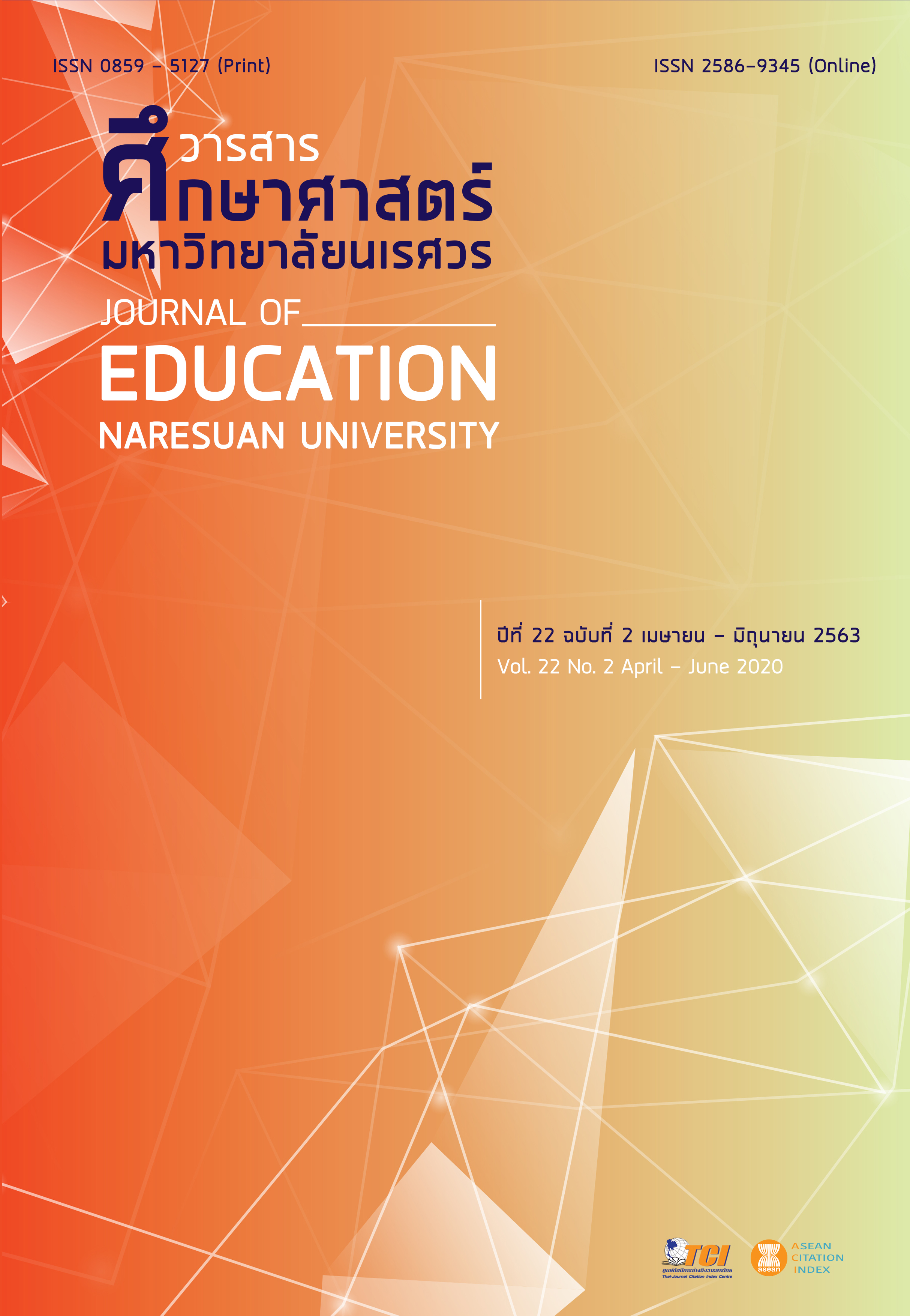A STUDY OF GAMIFICATION CONCEPT OF INNOVATIVE LEARNING
Main Article Content
Abstract
The aim of this study was to examine the results of applying gamification concept to the classroom. We measured teacher and student’s satisfaction, students’ liking to the subject, student motivation, and engagement in learning. The quasi-experimental nonequivalent-control group design was used with 78 students in the treatment groups and 112 students in the control groups. The results showed that 1) in the treatment groups, student’s liking for the subject and engagement in learning were higher than the control group with statistical significance of .01, 2) students’ behaviors in the treatment group reported listening to lecture, focusing on the learning, engaged interaction with instructor, fun and excitement, which were higher than students in the control group with statistical significance of .01, and 3) teachers were satisfied with applying gamification concept to the classroom.
Article Details
The owner of the article does not copy or violate any of its copyright. If any copyright infringement occurs or prosecution, in any case, the Editorial Board is not involved in all the rights to the owner of the article to be performed.
References
Banfield, J., & Wilkerson, B. (2014). Increasing student intrinsic motivation and self-efficacy through Gamification pedagogy. Contemporary Issues in Education Research (CIER), 7(4), 291-298.
Barata, G., Gama, S., Jorge, J., Gonçalves, D. (2013). Improving participation and learning with gamification. Proceedings of the First International Conference on Gameful Design, Research, and Applications. Toronto, Ontario: Canada.
Carini, R., Kuh, G., & Klein, S. (2006). Student engagement and student learning: Testing the linkages. Research in Higher Education, 47(1), 1-32. doi:10.1007/s11162-005-8150-9
Cheong, C., Filippou, J., & Cheong, F. (2014). Towards the gamification of learning: Investigating student perceptions of game elements. Journal of Information Systems Education, 25(3), 233-244.
Domínguez, A., Saenz de Navarrete, J., de Marcos, L., Fernández Sanz, L., Pagés, C., & Martínez Herráiz, J. J. (2013). Gamifying learning experiences: Practical implications and outcomes. Computers & Education, 63(0), 380-392. doi:http://dx.doi.org/10.1016/j.compedu.2012.12.020
George, D., & Mallery, P. (2003). SPSS for Windows step by step: A simple guide and reference (4th ed.). Boston: Allyn & Bacon.
Hamari, J., Koivisto, J., & Sarsa, H. (2014). Does gamification work? A literature review of empirical studies on gamification. Proceedings of the Annual Hawaii International Conference on System Sciences. 10.1109/HICSS.2014.377.
Huang, W. H. Y., & Soman, D. (2013). A practitioner's guide to gamification of education. Toronto: Rotman School of Management University of Toronto.
Inspection division, cluster 3. (2007). The problem behavior of students in the basic education school. Lobburi: Ministry of Education. [in Thai]
Junco, R., Heiberger, G., & Loken, E. (2011). The effect of Twitter on college student engagement and grades. Journal of Computer Assisted Learning, 27(2), 119-132. doi:10.1111/j.1365-2729.2010.00387.x
Kapp, K. M. (2012). The gamification of learning and instruction: Game-based methods and strategies for training and education. San Francisco, CA: Wiley.
Klem, A. M., & Connell, J. P. (2004). Relationships matter: Linking teacher support to student engagement and achievement. Journal of school health, 74(7), 262-273.
Lane, E. S., & Harris, S. E. (2015). A new tool for measuring student behavioral engagement in large university classes. Journal of College Science Teaching, 44(6), 83-91.
Maehr, M. L., & Midgley, C. (1991). Enhancing student motivation: A schoolwide approach. Educational Psychologist, 26, 399-428.
O'Donovan, S., Gain, J., & Marais, P. (2013). A case study in the gamification of a university-level games development course. Proceedings of the South African Institute for Computer Scientists and Information Technologists Conference. East London: South Africa.
Oh, S. (2012). The characteristics and motivations of health answerers for sharing information, knowledge, and experiences in online environments. Journal of the Association for Information Science and Technology, 63(3), 543-557.
Panich, V. (2012). The way to design the learning for students in 21st century. Bangkok: Sodsri Saritwong Foundation. [in Thai]
Poondej, C., & Lerdpornkulrat, T. (2016). Learning management with the gamification concept. Journal of Education Naresuan University, 18(3), 331-339. [in Thai]
Poondej, C., & Lerdpornkulrat, T. (2016). The development of gamified learning activities to increase student engagement in learning. Australian Educational Computing, 31(2). Retrieved from http://journal.acce.edu.au/index.php/AEC/article/view/110
Roeksabutr, A. (2009). How to teach for fun and engaging the learner. Retrieved from http://www.sahavicha.com/?name=article&file=readarticle&id=42 [in Thai]
Simões, J., Redondo, R. D., & Vilas, A. F. (2013). A social gamification framework for a K-6 learning platform. Computers in Human Behavior, 29(2), 345-353. doi:http://dx.doi.org/10.1016/j.chb.2012.06.007
Stott, A., & Neustaedter, C. (2013). Analysis of gamification in education. Surrey, BC: Canada.
Vernadakis, N., Giannousi, M., Tsitskari, E., Antoniou, P., & Kioumourtzoglou, S. (2012). Comparison of student satisfaction between traditional and blended technology course offerings in Physical education. Turkish Online Journal of Distance Education, 13(1), 137-147.


